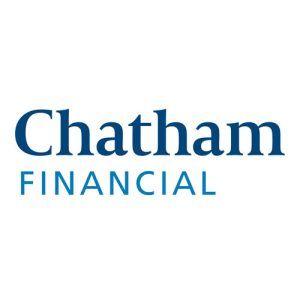“Has the train left the station? Are we trying to bolt the door after the horse has left the stable?”
These are the types of questions community bank Directors are asking in the aftermath of the largest single-year interest rate increase since 1980. Playing catch-up in its fight to control inflation, the Federal Reserve’s rate hikes in 2022 were both unexpected and larger than in any previous decades. One year later, some industry observers have begun to argue that an overly aggressive Fed may soon need to reverse course to prevent a recession. If the worst is truly behind us, this line of argument goes, “Why should a bank executive invest time in 2023 to install interest rate hedging capabilities?”
Because, we argue, there will always be uncertainty regarding the direction and speed of change in interest rates. Swaps give institutions enormous power because they have the ability to exchange that uncertainty (floating rate) for certainty (fixed rate).
Here are three strategies we think banks with direct access to interest rate derivatives will deploy in 2023. These ideas are timeless but are particularly relevant based on where we are today in the economic cycle:
1. Individual Loans
A borrower hedging program enables a bank to retain a floating-rate asset while the borrower secures fixed-rate financing via a swap. With on-balance sheet loan rates jumping from the mid-3% range to as high as 6% to 7%, booking the fixed-rate loan seems like the best thing to do. But weak or negotiable prepayment language often means that a fixed-rate loan really behaves like a one-way floater. For example, a loan booked at 6.5% today will never move higher — but if the market corrects lower, you can expect a call from the borrower looking for a downward rate adjustment.
Some banks without access to hedging tools have placed their borrowers into loan-level interest rate swaps by involving an outside party in the loan agreement. These indirect swaps are designed as a convenience product for small banks to get their toe in the water and accommodate larger borrowers with a long-term fixed rate. By keeping the community bank swap-free, indirect programs also prevent the bank from considering the following two balance sheet strategies that protect and enhance net interest margin.
2. Securities Portfolio
Perhaps the greatest pain point related to interest rates that banks experience in 2022 was marking the securities portfolio to market prices and booking the resulting unrealized losses in the accumulated other comprehensive income, or AOCI, account. Banks without swaps installed were forced to choose between two bad options during the excess liquidity surge of 2020: hold onto cash that earned virtually nothing or purchase low-yielding long-term bonds to pick up maybe 100 basis points. Institutions with access to swaps had a third choice: keep the first two years of the higher-yielding asset and then swap the final eight years to a floating rate. Swaps used to fine-tune the duration of a bond provide the double benefit of converting to a higher floating yield today (handy when the fed funds are around 4.33%) and creating a gain in the AOCI account to offset the losses booked on the bond.
While a swap today cannot erase past unrealized losses, it is a game changer for the CFO and treasurer to have the ability to take control of portfolio duration.
3. Wholesale Funding
Higher interest rates have also led depositors to move their funds, leading banks to grow their wholesale funding from sources. Banks without access to swaps will often ladder out term fixed-rate advances to longer maturity dates, using a product that includes both a yield curve premium and a liquidity premium. A bank with hedging capabilities can accomplish the same objective by keeping the actual funding position short and floating. From there, the funding manager can conserve the liquidity premium and achieve a more efficient all-in borrowing cost by using pay-fixed swaps to create the ladder. Additionally, the swap always provides a two-way make-whole, where a traditional fixed-advance includes a down-rate penalty but no benefit when rates rise.
While some bankers still view interest rate derivatives as risky, the rapidly changing conditions experienced in 2022 suggest that the greater risk may be attempting to manage the balance sheet without access to these powerful tools. Today, more than 40 years since their creation, one thing is certain: it’s not too late for any bank to start using interest rate derivatives.
Learn more about Bob Newman at www.chathamfinancial.com/team/bob-newman.








